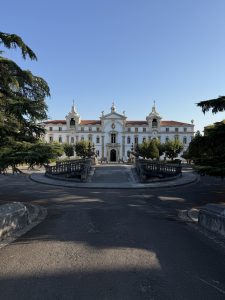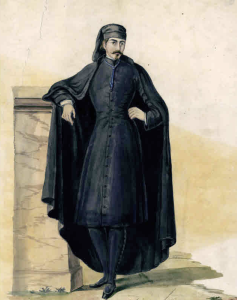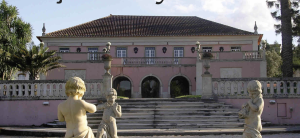Tradition
Academic Dress of Coimbra
The Academic Dress of Coimbra, also known as Capa e Batina, has deep historical roots in university tradition.
It emerged as a way of distinguishing students and professors at the University of Coimbra, having evolved from the robes worn by clergymen, who in the early centuries of the university had exclusive rights to wear them.
The evolution of the attire can be seen gradually, with the opening of university attendance to other classes, becoming more permeable to fashions (lace, charms, silks, frills, various types of hats/caps, shorts…), although strongly marked by criteria of sobriety and austerity.
The cape and cassock were used to identify those who were studying, and were later adapted to the fashion influences of the time.
Academic dress is more than just clothing; it is a symbol of tradition, belonging to the academic community and a reflection of the history of the University of Coimbra.
The adoption of academic dress was a mark of distinction, intended to differentiate the university community from the rest of the population and other professions.
Evolution of the Costume:
In the 18th century, the ‘loba’ – a type of sleeveless ecclesiastical cassock or surplice, trimmed at the front with two rows of buttons from the neck to below the knee, together with breeches, a cape and a round or pointed cap
corners (the cap only appeared at the end of the 18th century) – began to be replaced by the ‘abatina’, a shorter and less expensive cape and tunic ensemble.
The cassock began to be worn with a long cape, similar to the attire adopted at the College of Nobles and by some university students in the 19th century.
With the Republic in the 20th century, the attire underwent changes, initially being optional and almost prohibited, but eventually remaining as a symbol of academic identity.
Costume elements:
Cape: A long cape, which should touch the floor when placed over the shoulders, without folds.
Cassock: A type of coat, usually black, worn over a white shirt.
Waistcoat: Usually black, with an odd number of buttons, which should all be buttoned,
except for the last one.
Tie: Black, plain.
Trousers: Black.
Shoes: Black.
Other Elements:
Ribbons: The ribbons worn by final-year students originate from the ribbons used to fasten the ‘praxe folder’.
Emblems and Crests: The use of emblems on the cape is a tradition that dates back to the 1930s/1940s.
Pins and Badges: The use of pins and badges is common, representing individuality and academic achievements.






